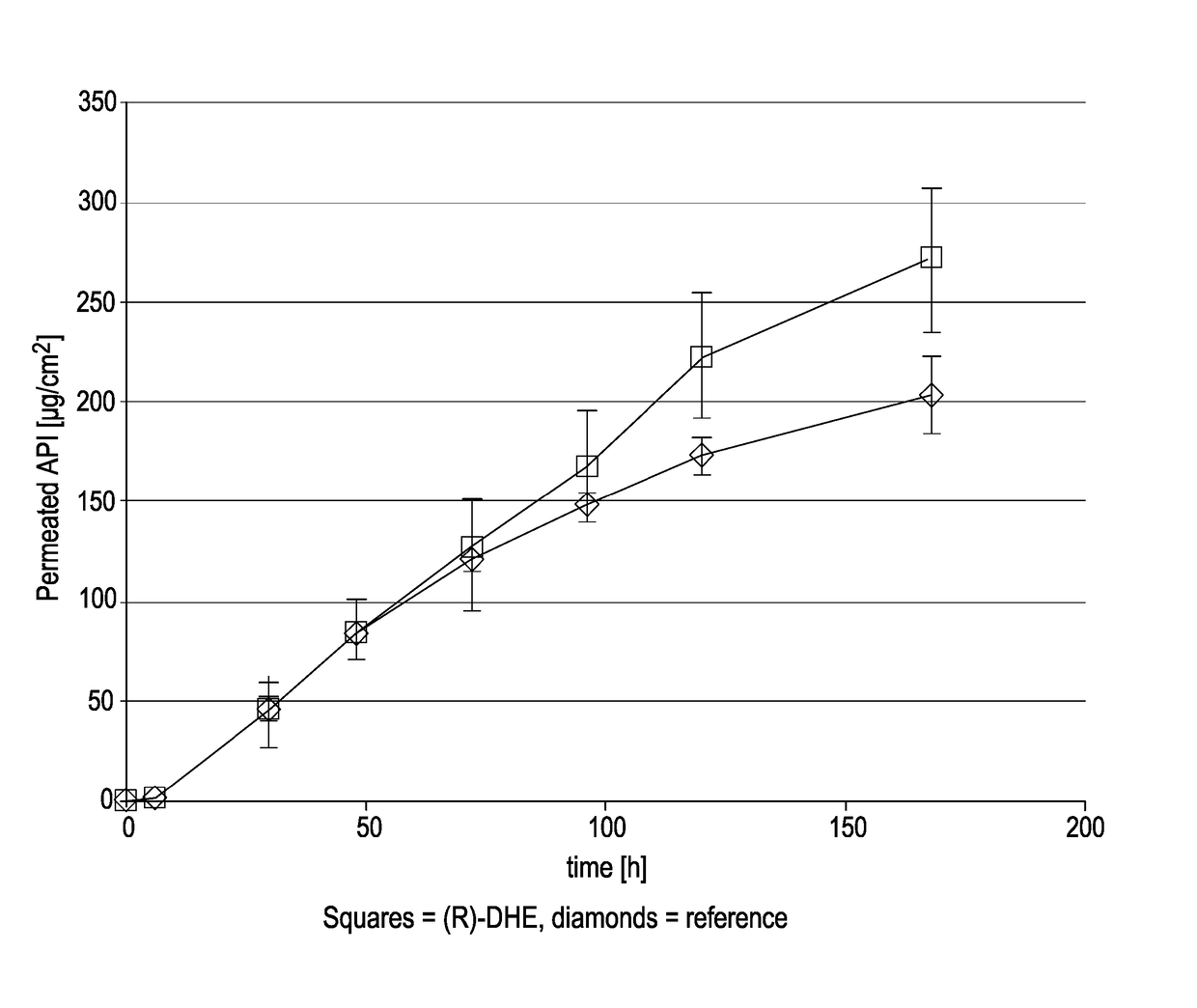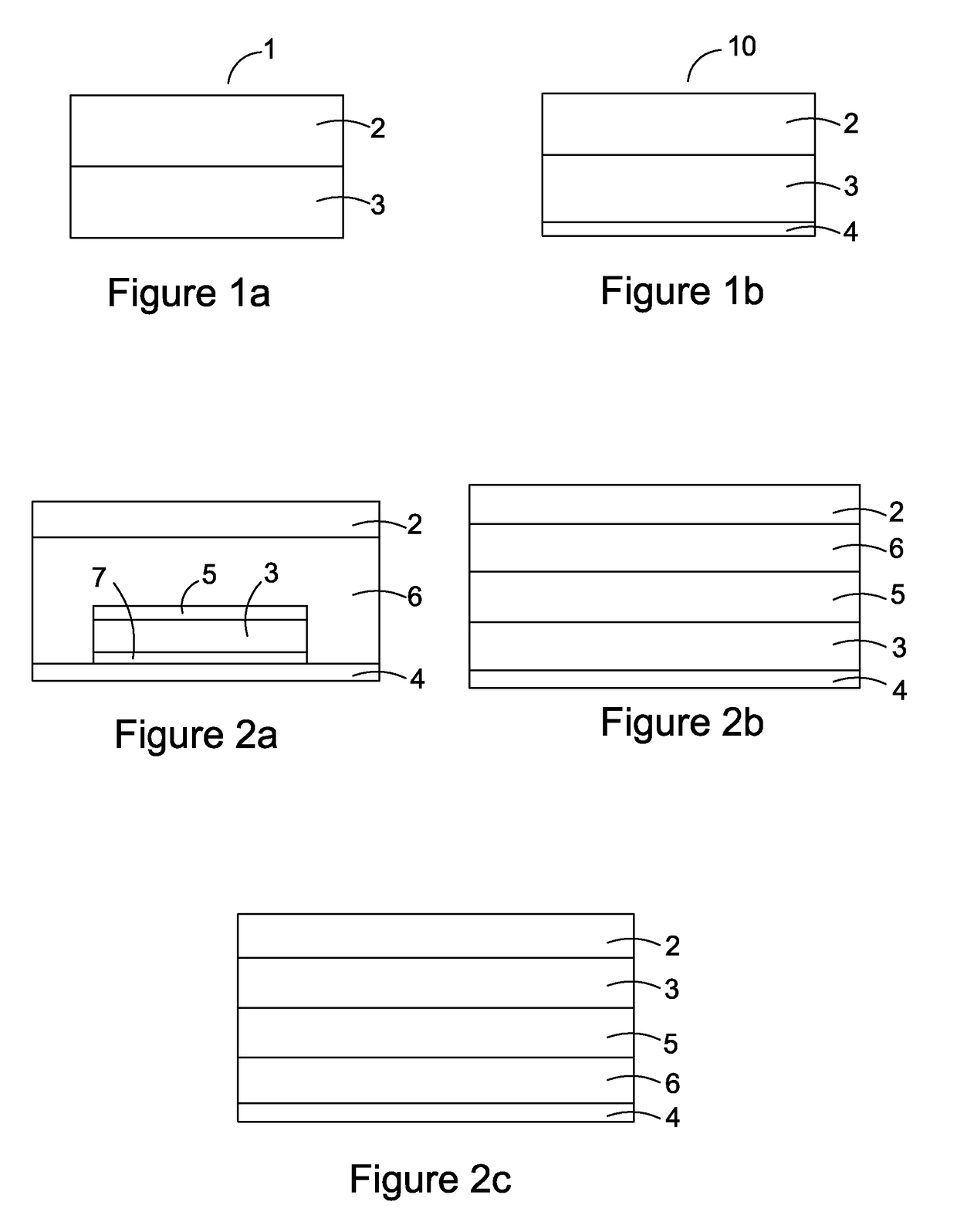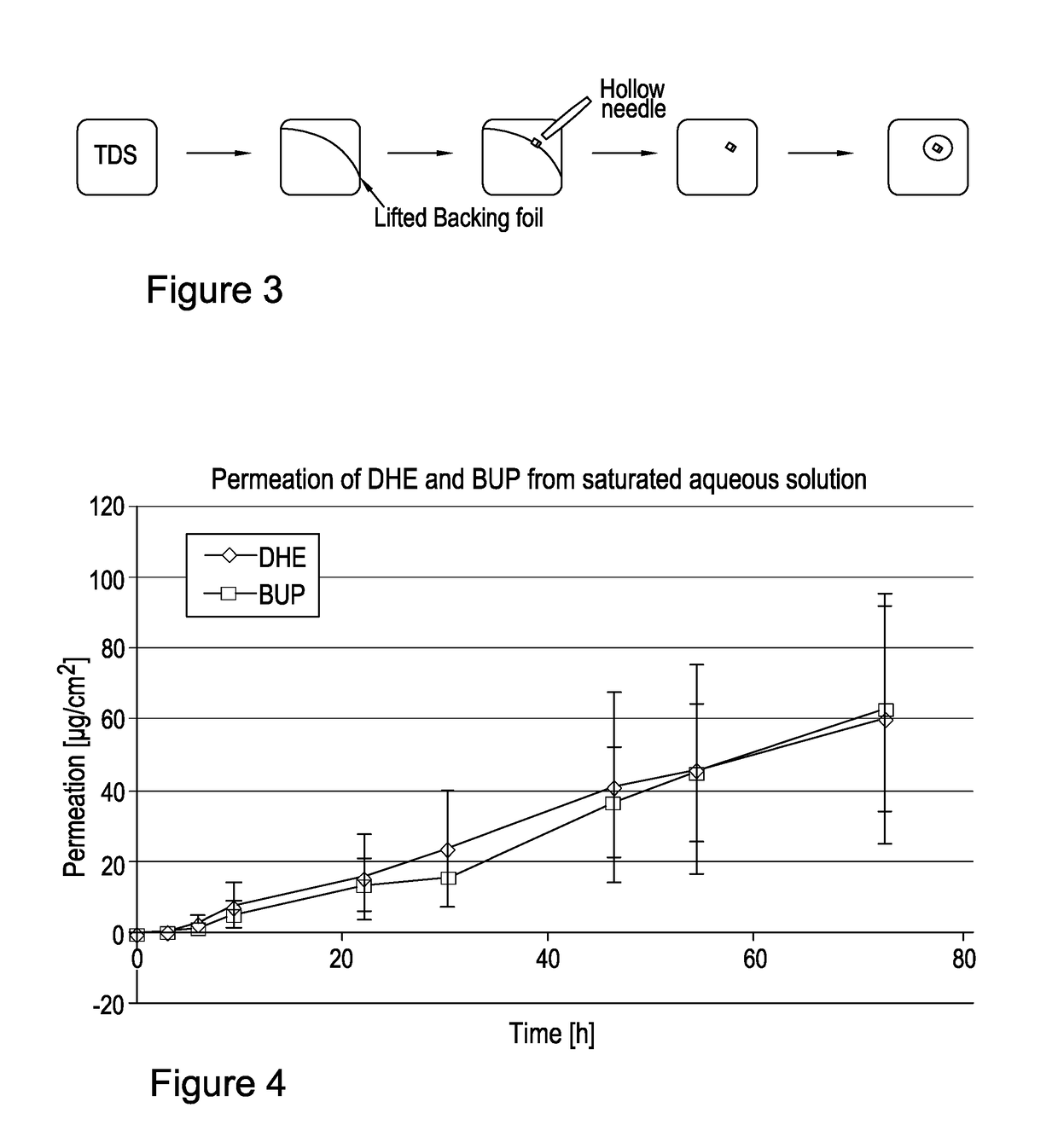Transdermal delivery system
a delivery system and transdermal patch technology, applied in the field of transdermal patch, can solve the problems of inconsistent drug flux through the skin, inconvenient development of commercially viable transdermal patch that provides controlled and sustained drug release, and affecting the safety of patients
- Summary
- Abstract
- Description
- Claims
- Application Information
AI Technical Summary
Benefits of technology
Problems solved by technology
Method used
Image
Examples
examples
[0183]Materials and Equipment
[0184]Drug
[0185](R)-DHE was prepared by a synthetic route. Suitable synthetic routes for the preparation of (R)-DHE are known. It is also commercially available.
TABLE 1Name(R)-Dihydroetorphine (R-DHE)Chemical name7,8-dihydro-7a-[1-(R)-hy-droxy-1-methylbutyl]-6,14-endo-ethanotetrahydro-oripavineCAS No.14357-76-7Molecular weight413.55Chirality / It is a single isomer with 5R, 6R,Stereochemistry7R, 9R, 13S, 14S, 19R configuration.DescriptionWhite to off white crystalline solidSolubilityInsoluble in water, partially solublein ethanol and acetone and readily solublein dichloromethanepKa18.2 (tertiary amine)pKa29.5 (aromatic hydroxy)Melting point205-207° C. (209° C. by DSC)LogP3.5 (neutral species)
[0186]Buprenorphine base, used in comparative testing, was supplied by McFarlan Smith.
[0187]Patch Materials
TABLE 2Polymer(solvent system)TypeFunctionSupplierDURO-TAKPoly(meth)acrylate;Matrix,Henkel87-9301no OH or COOHAdhesive(Ethylacetate)functional groupsDURO-TAKPoly(...
PUM
| Property | Measurement | Unit |
|---|---|---|
| time | aaaaa | aaaaa |
| softening point | aaaaa | aaaaa |
| area | aaaaa | aaaaa |
Abstract
Description
Claims
Application Information
 Login to View More
Login to View More - R&D
- Intellectual Property
- Life Sciences
- Materials
- Tech Scout
- Unparalleled Data Quality
- Higher Quality Content
- 60% Fewer Hallucinations
Browse by: Latest US Patents, China's latest patents, Technical Efficacy Thesaurus, Application Domain, Technology Topic, Popular Technical Reports.
© 2025 PatSnap. All rights reserved.Legal|Privacy policy|Modern Slavery Act Transparency Statement|Sitemap|About US| Contact US: help@patsnap.com



